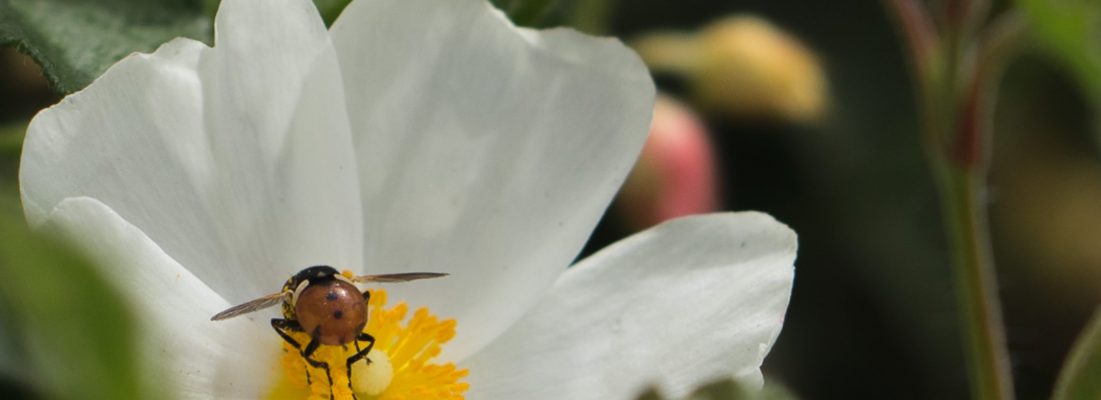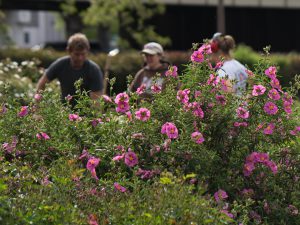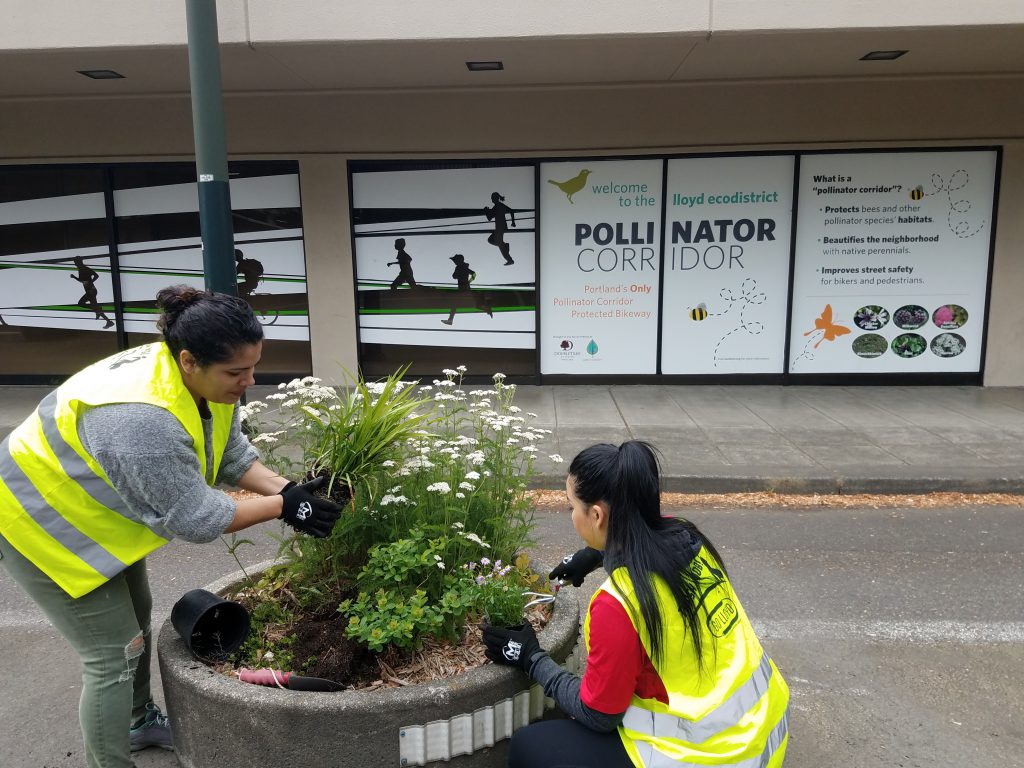Pollinator Placemaking

Lloyd EcoDistrict has a vision of a neighborhood where bees find nectar-rich plants on every block, flowers brighten the hard concrete spaces, and rainfall goes to the roots of plants instead of into a stormdrain. Cities have an important role to play in bolstering pollinator populations. “Pollinator Placemaking” is what we call the projects that bring living plants into urban spaces and make sure that those plants support the animals that call this place home. Pollinator spaces in parking strips, bike corridors, and corporate-owned spaces in our EcoDistrict are critical to our natural environment, food supply and health. Plantings help counteract the heat island effect and remove pollutants from the air. Over 30% of the foods we enjoy are dependent on pollinators. According to the Xerces Society, “A world without pollinators would not only leave us with fewer food choices, but would make it substantially harder to find the nutrition we need to survive.” EcoDistrict-scale projects like these bring to bear the power of neighborhood collaboration on entrenched problems with solutions that can be scaled up to the city level and beyond.

